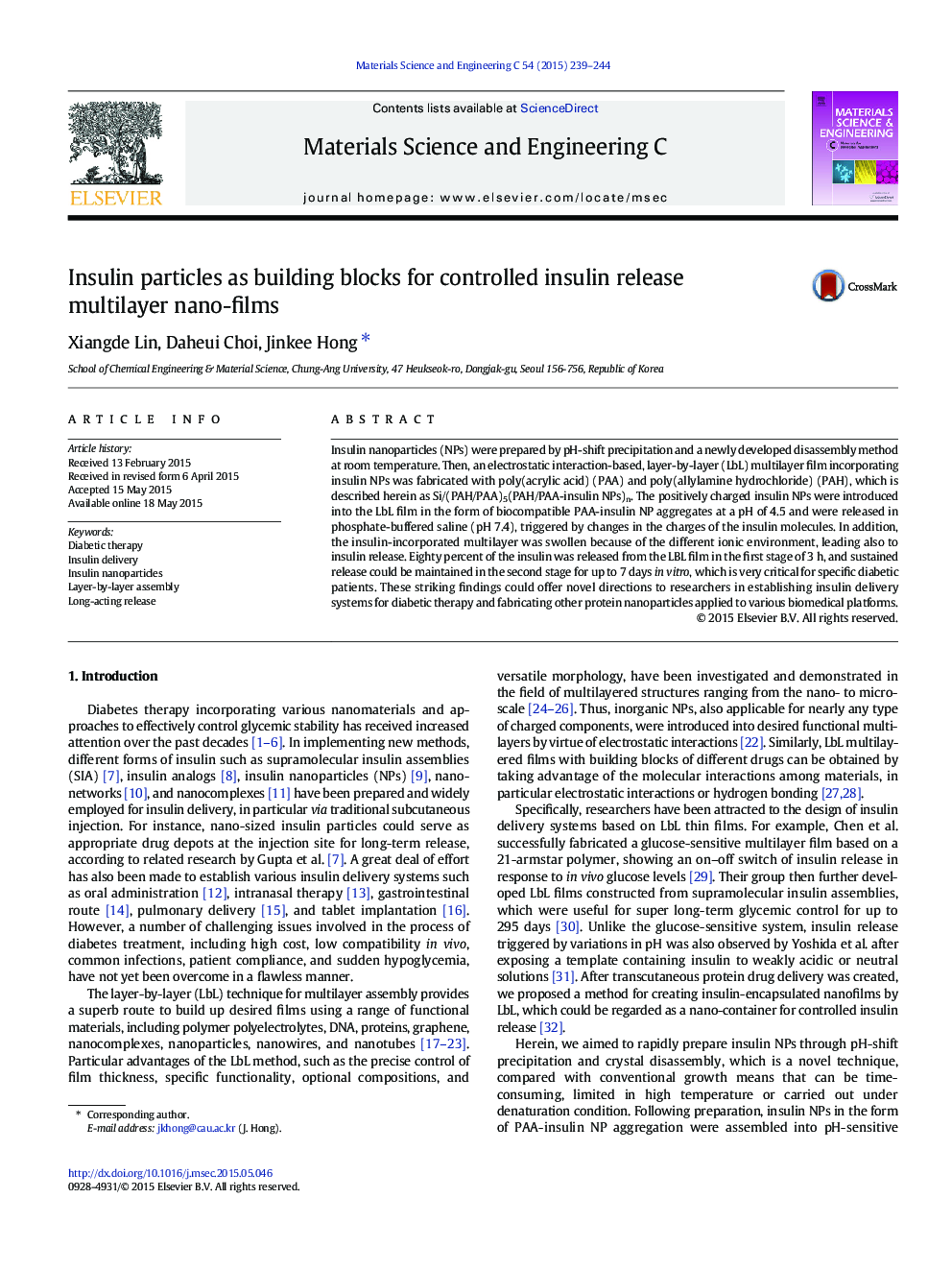| Article ID | Journal | Published Year | Pages | File Type |
|---|---|---|---|---|
| 1428141 | Materials Science and Engineering: C | 2015 | 6 Pages |
•A newly developed method for preparing insulin nanoparticles was proposed.•Insulin nanoparticles were introduced into a patch for transcutaneous delivery.•Sustained insulin release from LbL film continued for up to 7 days.•This report guides establishment of bio-platforms for other protein nanoparticles.
Insulin nanoparticles (NPs) were prepared by pH-shift precipitation and a newly developed disassembly method at room temperature. Then, an electrostatic interaction-based, layer-by-layer (LbL) multilayer film incorporating insulin NPs was fabricated with poly(acrylic acid) (PAA) and poly(allylamine hydrochloride) (PAH), which is described herein as Si/(PAH/PAA)5(PAH/PAA-insulin NPs)n. The positively charged insulin NPs were introduced into the LbL film in the form of biocompatible PAA-insulin NP aggregates at a pH of 4.5 and were released in phosphate-buffered saline (pH 7.4), triggered by changes in the charges of the insulin molecules. In addition, the insulin-incorporated multilayer was swollen because of the different ionic environment, leading also to insulin release. Eighty percent of the insulin was released from the LBL film in the first stage of 3 h, and sustained release could be maintained in the second stage for up to 7 days in vitro, which is very critical for specific diabetic patients. These striking findings could offer novel directions to researchers in establishing insulin delivery systems for diabetic therapy and fabricating other protein nanoparticles applied to various biomedical platforms.
Graphical abstractFigure optionsDownload full-size imageDownload as PowerPoint slide
